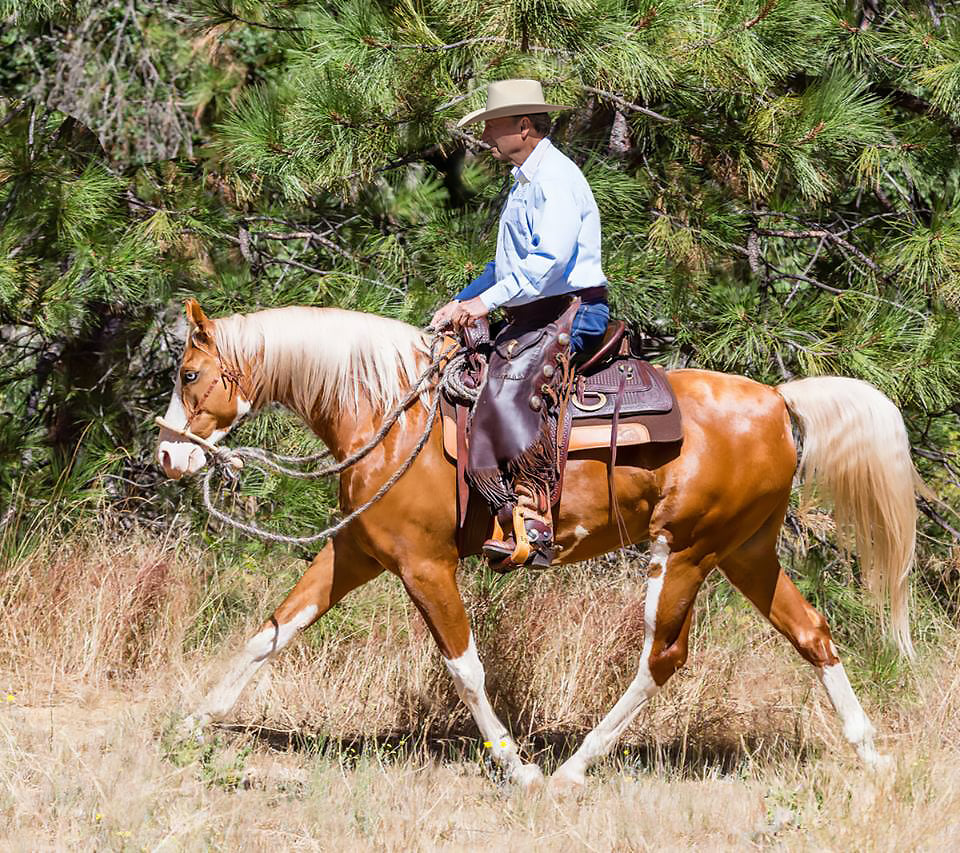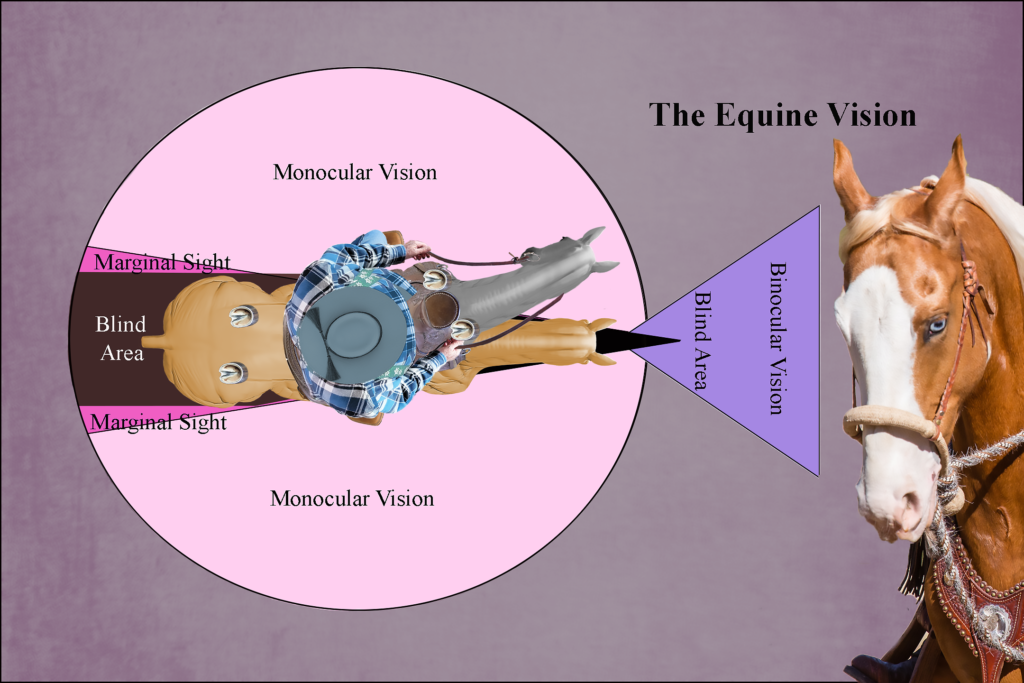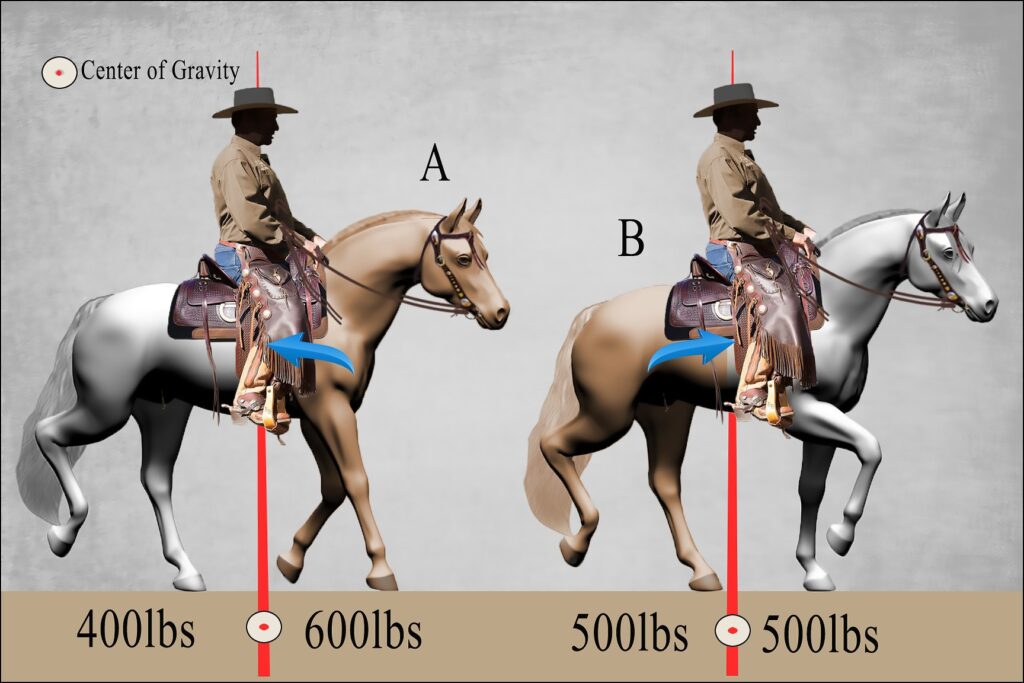Let your horse see your hand before connecting with the bite…..!
Horses can detect the appearance of objects within an almost fully encompassing circle and are able to identify objects within most but not all of their panoramic field of view.
The horse is a prey animal, relying on their senses to assess their environment. Prey species are designed for scanning the environment compared to picking out sharp details. By scanning larger areas, prey is safer from a surprise attack from a predator. Horses use vision to orientate themselves, detect motion and distance, and evaluate the consistency of the environment. The equine eye is eight times larger than human eyes placed on the sides of their head. The position of the eyes on the horse’s face accounts for differences in how horses see, dictate visual range, peripheral motion detection and depth perception.
A horses’ ability to see depth is limited because their eyes are set so far apart. From most angles, horses cannot get a left-eye and right-eye view of the same object in one glance. Unlike humans, the horse is able to see images to the left and right at the same time due to the eyes being at the side of the head.
Horses use two-forms of vision, monocular and binocular. Monocular vision allows the horse to see on both sides of his head, meaning the left eye and the right eye work independently and see different views.
When a horse raises its head, they use binocular vision to focus on distant objects.
A horse with the head held vertically down, the binocular focus will be on objects near its feet.
Educate the horse to stay in BALANCE
Cowboy Dressage Mission is to educate the horse to stay in BALANCE with the rider on his back, with SOFT FEEL.
I do not shift his weight backwards (A). – I ride the back toward to the front (B).
![]()



